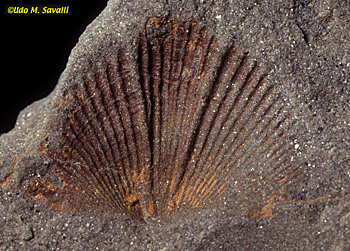Fossils are the remaining of dead animals and plants after their body buried in mud or sand under the rivers and lakes. Mold fossil is one of the most important types of fossils.
Fossils indicate the trace of life many years ago. By studying fossils, we can also tell the time interval in which the specie has been lived.
The four main types of fossils are mold fossils, trace fossils, true form fossils, and cast fossils.
Here in this article, we will tell you to mold fossil definitions, examples, facts, and answers to some frequently asked questions. So, let’s start with the introduction.
Mold Fossil Definition:
Mold fossils are the fossils that emerge when an animal or specie dies and the sediment fills the outside and inside of the dead body leaving just a texture and shape of that animal.
These fossils just indicate the shape of that creature. Not only animals but also for all organic materials.
Mold fossil examples:
The mold fossils can be made of any shape and material. They also can be made artificially. The most common mold fossil examples are leaves, skin, teeth, embryos, and claws.
Cast fossil vs Mold fossil:

People got confused when discussing the difference between cast fossil and mold fossils. To find the difference, it’s important to know the exact definition of both types of fossils.
Mold fossils are the prints of material or organism generated by the sediment located in and outside of the organism or object
Cast fossils emerge when the imprints of mold are filled with another sediment to form a boundary around the imprint in a form of rock.
You may also like: are dinosaurs still alive
Which condition is necessary for a mold fossil to form?

The only condition which is necessary for a mold to form is the burial of the animal body in sediment. If the body is buried in sediment then the mold will form.
A mold fossil is most similar to…
A mold fossil is most similar to a cast fossil because the first fossil which is found by the buried of the organism in sediment is a mold fossil and then the cast fossil forms when another layer of sediment covers the mold fossil making a rock.
You may also like: The biggest dinosaur
How is a cast fossil different from a mold fossil?
The major difference is the layer of another sediment on the print of an organism or object. First forms a mold fossil and then another layer of sediment covers the print of the organism and generates a rock and boundary around the mold formation.
You may also like: List of dinosaurs
Mold fossil facts:

Below are some interesting and informative facts related to mold fossils.
1. Mold fossils are very similar to cast fossils. Mold fossil is the interval of the formation of cast fossils. Just need to add the layer of another sediment to form a cast fossil.
2. The mold fossils can only be found in sediments like soft soil and mud.
3. Mold fossils are one of the most famous fossils around paleontologists.
4. Mold fossils help researchers to guess the exact shape and structure of an organism.
5. By mild fossils, we can find the exact size and shape of dead organisms. Mold fossils have helped researchers a lot in many finding the shape and size of many dinosaurs.
Hope you have known much more about mold fossils. For any questions and confusion, feel free to ask us in the comment section.
You may also like: When did dinosaurs go extinct

